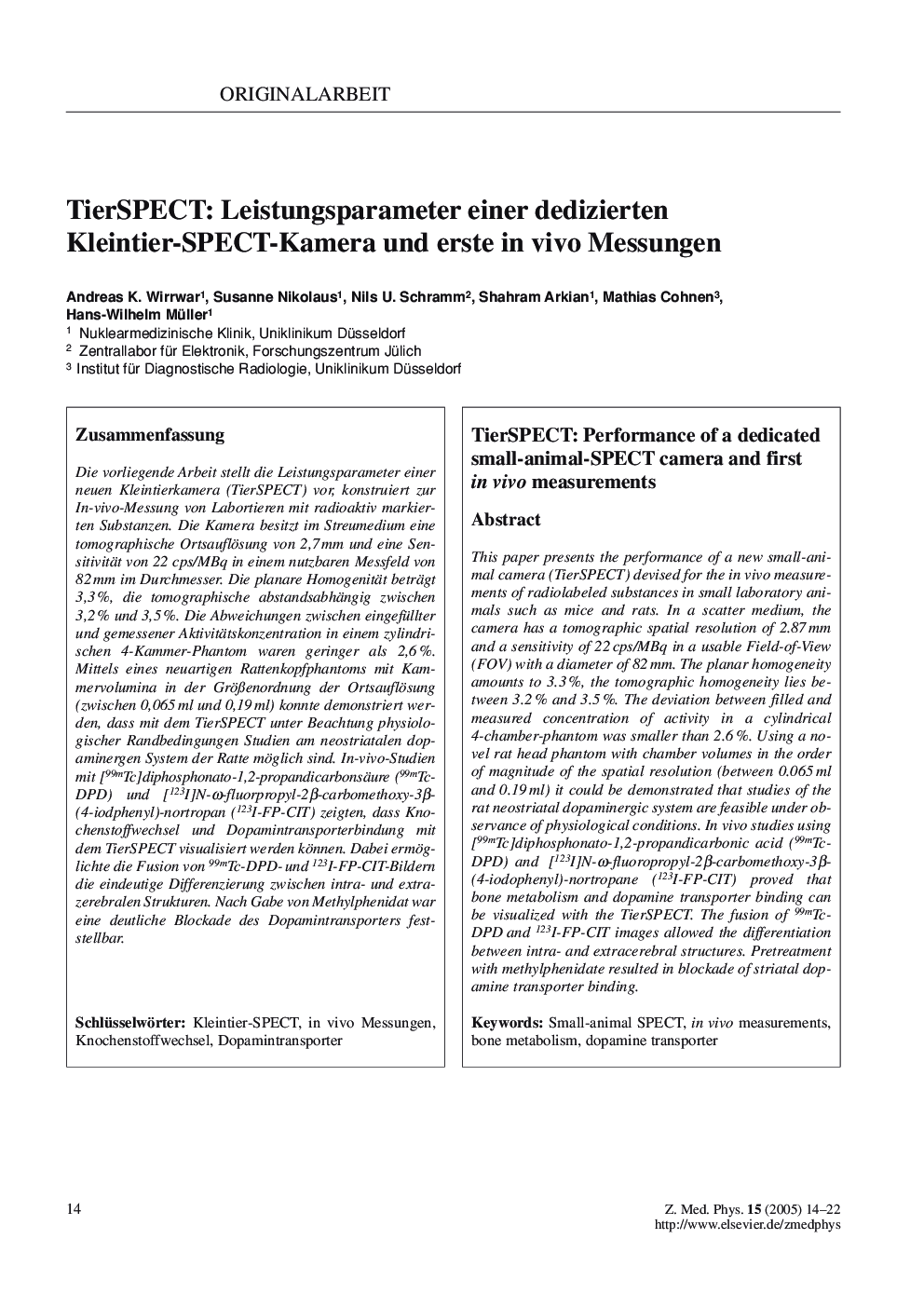| Article ID | Journal | Published Year | Pages | File Type |
|---|---|---|---|---|
| 10732703 | Zeitschrift für Medizinische Physik | 2005 | 9 Pages |
Abstract
This paper presents the performance of a new small-animal camera (TierSPECT) devised for the in vivo measurements of radiolabeled substances in small laboratory animals such as mice and rats. In a scatter medium, the camera has a tomographic spatial resolution of 2.87 mm and a sensitivity of 22 cps/MBq in a usable Field-of-View (FOV) with a diameter of 82mm. The planar homogeneity amounts to 3.3%, the tomographic homogeneity lies between 3.2% and 3.5%. The deviation between filled and measured concentration of activity in a cylindrical 4-chamber-phantom was smaller than 2.6%. Using a novel rat head phantom with chamber volumes in the order of magnitude of the spatial resolution (between 0.065 ml and 0.19 ml) it could be demonstrated that studies of the rat neostriatal dopaminergic system are feasible under observance of physiological conditions. In vivo studies using [99mTc]diphosphonato-1,2-propandicarbonic acid (99mTc-DPD) and [123I]N-Ï-fluoropropyl-2β-carbomethoxy-3β-(4-iodophenyl)-nortropane (123I-FP-CIT) proved that bone metabolism and dopamine transporter binding can be visualized with the TierSPECT. The fusion of 99mTc-DPD and 123I-FP-CIT images allowed the differentiation between intra- and extracerebral structures. Pretreatment with methylphenidate resulted in blockade of striatal dopamine transporter binding.
Related Topics
Physical Sciences and Engineering
Engineering
Biomedical Engineering
Authors
Andreas K Wirrwar, Susanne Nikolaus, Nils U Schramm, Shahram Arkian, Mathias Cohnen, Hans-Wilhelm Müller,
